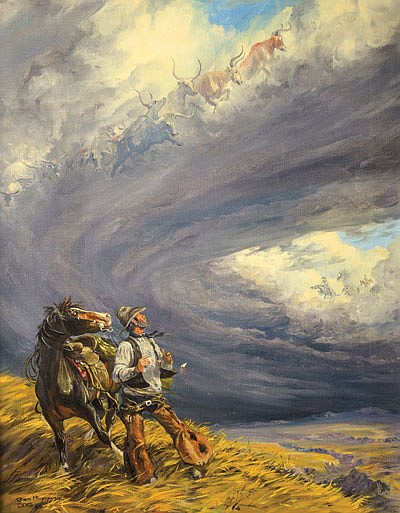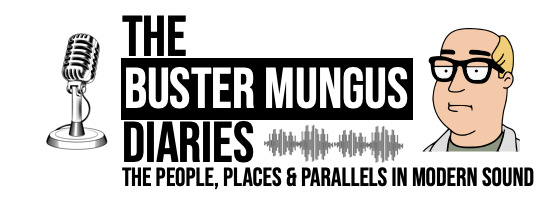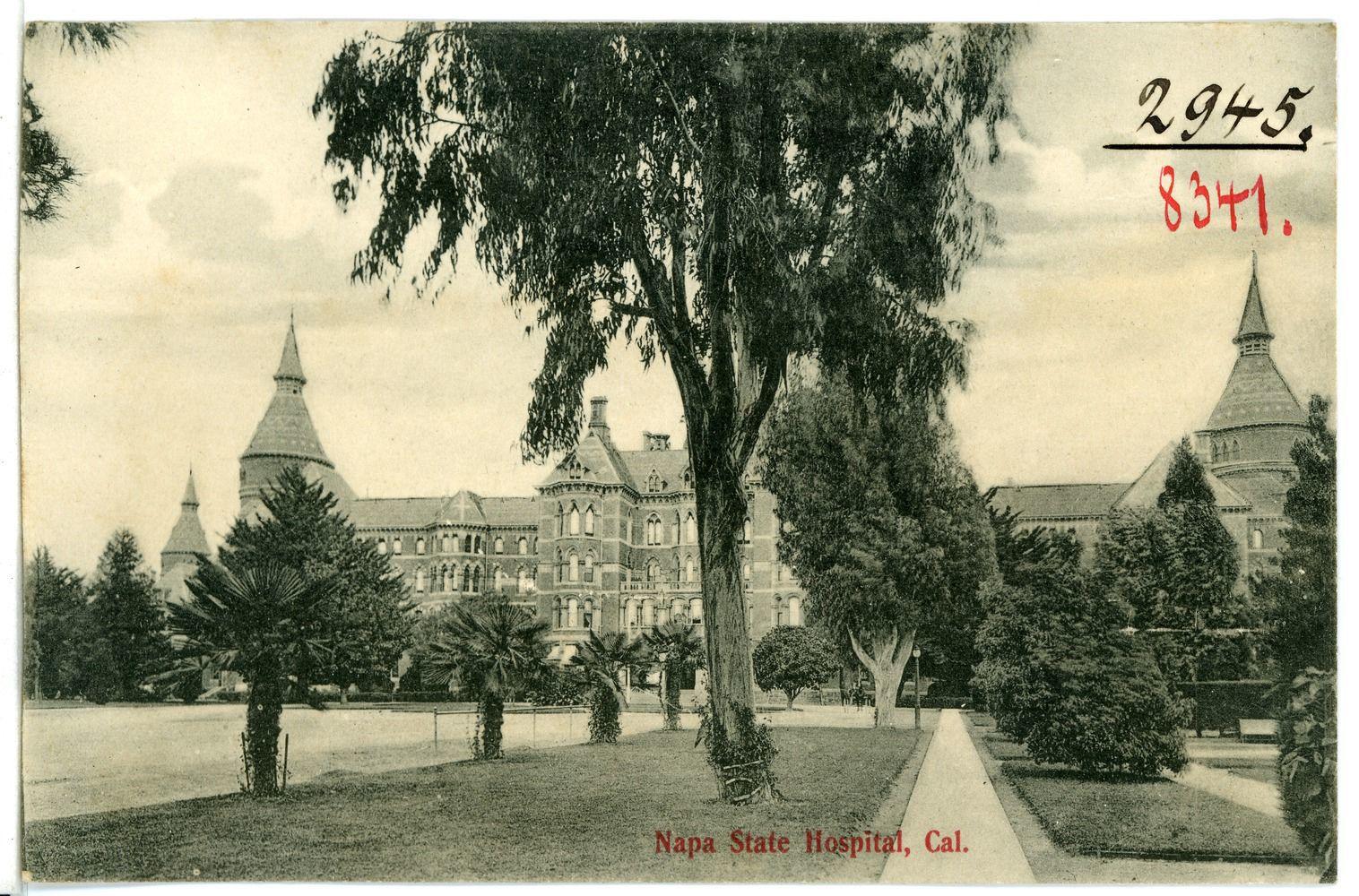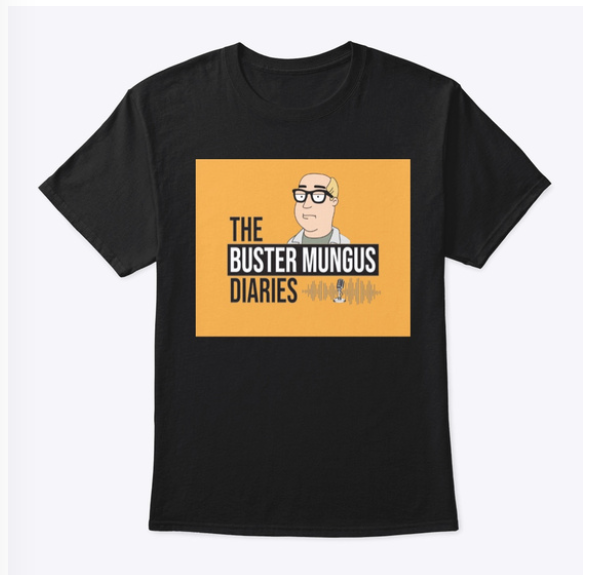Origins of "Riders in the Sky"

In this episode we take a look at the history of one of the most widely post WWII, "Covered" popular songs in the ASCAP publishing database.
From its humble beginnings as a European folk song to its re-appearance during the American Civil War asa melody for a drinking song, to its eventual use as she basis for a song about a cautionary tale warning a cowboy that if he doesn't change his ways, who will one day join the damned cowboys doomed to try to “catch the Devil”s herd across these endless skies.
Music Videos
While not an official video production from the estate of Marty Robbins, I really do think that this visual interpretation captures some the essence regarding "Riders in the Sky"
From a September 1990 episode of the CBS Television show "Hee Haw". Glen Campbell & Roy Clark play "Ghost Riders in the Sky", with some help from Jeff Dayton. Glen & Roy's version of this song is on the soundtrack album for the 1985 movie "Uphill All the Way", available at finer retailers everywhere!
This is 1961... (Restored footage). Levang was hired as a temporary guitar and banjo player on The Lawrence Welk Show when Buddy Merrill left to serve in the United States Army. Welk was so pleased with his ability that he hired Levang on a permanent basis when Buddy completed his tour of duty in 1961. Levang stayed with the Welk Band until its final show in 1982.
That same year, at the Country Music Association Awards he was nominated for best artist on a specialty instrument, the mandolin.
He was also an accomplished studio musician, playing on several records for artists such as Glen Campbell, Frank Zappa, Bobby Darin, Bobbi Gentry, David Clayton Thomas, Neal Hefti ("Batman Theme"), Elvis Presley, Dean Martin, Neil Diamond and Noel Boggs. Levang died in Canyon Country, California at the age of 83.
The ill fated reboot of the Blues Brothers movie franchise in the late 1990s tried to recapture the romance and legitimacy of the original film by relying on trade and true musical icons such as "Riders in the Sky".
Filmed in Toronto, Ontario Canada, most of which was shot in the Cherry Street area of Toronto in what is now the "Distillery District". The timing was right and so were the surroundings. The area had been a staging ground and ancillary storage and processing to the nearby Docklands south of Lakeshore Drive.
I watched the movie filming evolve on a daily basis during 1996/1997 as I drove Cherry St. Daily on my way to work. Sets going up and then controlled destruction of the concert hall included in this clip.
One of the first appearances of "Riders in the Sky" came during a 1949 episode of the movie by the same name. Singing Cowboy Gene Autry sings the Western Classic song "Ghost Riders in the Sky" from his movie "Riders in the Sky" from Columbia Pictures 1949.
By the mid 1980s, Duane Eddy had entered a new career awakening after his work with the Art of Noise and their reworking of the "Peter Gunn Theme". This time out we catch Duane flying his stylings all over our featured track. This video is from an American TV appearance in 1996.
In the USA, and more specifically, Texas is full of lore, legends, and ghost stories. The tale of the Ghost Riders is by far the saddest, most evil, not to mention, the most famous one in the country. This legend is sadly true, a senseless ghoulish tragedy which took place in Crosby County, Texas. You may know it as Stampede Mesa. The legend inspired the classic song “Ghost Riders in the Sky.”
Playlists
We take a look at those camp kings the Cramps and their early music illustrating their success by playing the original songs by the original artists, the Cramps demos and live bootlegs and then finally contrast those efforts with the final album version.
Then blast head first into the first two albums with Sunglasses After Dark, Mystery Plane, Twist and Shout which ends up released as Drug Train.
Finally, we look at the tracks from Psychedelic Jungle. Jungle Hop, the Crusher, and Rocking Bones.
Geta master class in the Cramps and the cover songs that made them famous.
Listen to the growth and evolution of Cramps classics from their first EP such as Human Fly, The Way I Walk and Domino or the ULTRA RARE Red Headed Woman from the same sessions.
The Cramps "Human Fly" short 16mm film promo by Alex de Laszlo shot in New York City circa, 1978. I dig how instead of the film makers going for the obvious, and attempt to literally illustrate the lyrics, they just chose to use the images with the weird creepy vibe of the song.
If you still remain uncertain as to the the impact the Cramps have had on Rock & Roll, Henry Rollins lays forth a very certain viewpoint for you to at least dig a little further. The greatest thing about Henry is how he still comes across in this monologue as a music fan first despite his years as a successful front man himself.
In Canada, our version of MTV was MuchMusic. Originally, just as MTV did, MuchMusic were all about the music and videos, before alas, becoming a tween/teen lifestyle channel, then finally cancelled by its new owner Bell Media. One thing that MuchMusic did well was to promote music that wasn't necessarily mainstream at the time.
In advance of their concert at the Masonic Temple in Toronto in May of 1990, Lux and Ivy interview with Erica Ehm, who, em . . . seems a little unsure of what to make of the pair. Still an entertaining video package.
As far as concert films go the famed and notorious "Live at Napa State Mental Hospital" is perhaps the most incredible, ballsy and original concert ever recorded. The Cramps performed a free concert given for the patients at the California State Mental Hospital in Napa, CA, on June 13, 1978, a time when Napa was more known for the hospital than for its burgeoning wine industry.
Once upon a time, a hospital castle was Napa Valley’s centerpiece Kirk Kirkpatrick Feb 20, 2018 provides the reader with a fantastic and sympathetic history of the grounds, the castle and programs offered to the less fortunate amongst us. Well worth the read.
The videotape of The Cramps performing the free show for the patients at The Napa Hospital was intended initially as strictly a documentary. How the tape changed hands to become released by Target Video is widely disputed, what's not is the authenticity of the band and more importantly the that of the audio members.
The videotape was recorded on a 1/2" Sony Portapak, B/W camera, and single microphone. This equipment was some of the first of its kind to be made available for public or consumer use. The release version we have was taken from an original VHS tape and then colourized by an avid fan. Don't expect anything more than amateurish camera work, but you should expect to see a band who were not afraid or put off by the audience putting on s show of shows. Hint: while Lux and Ivy are synonymous with the band, watch Bryan Gregory on the left hand side of the stage . . . He's the master distortion and fuzz.









Social Media
Search Here